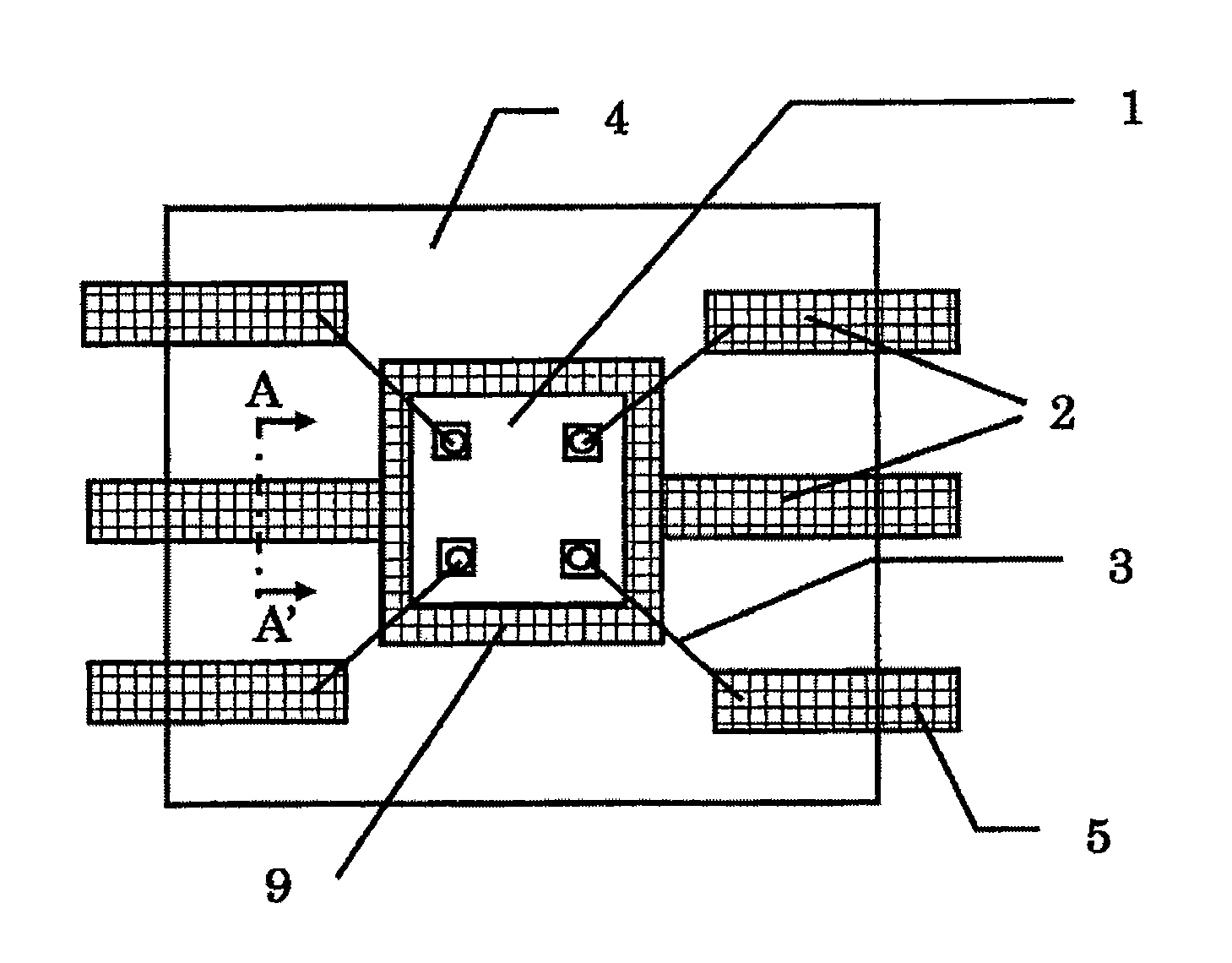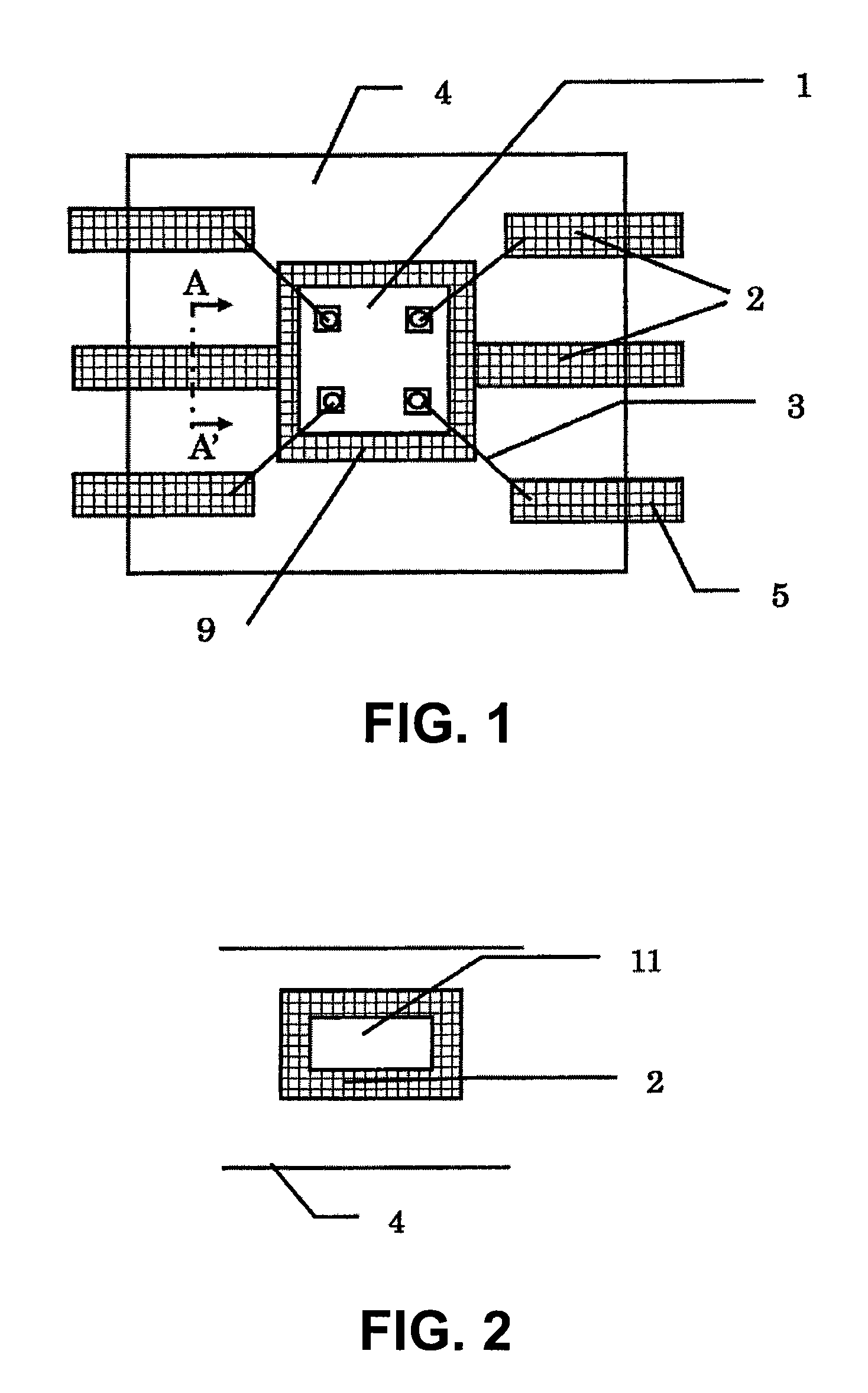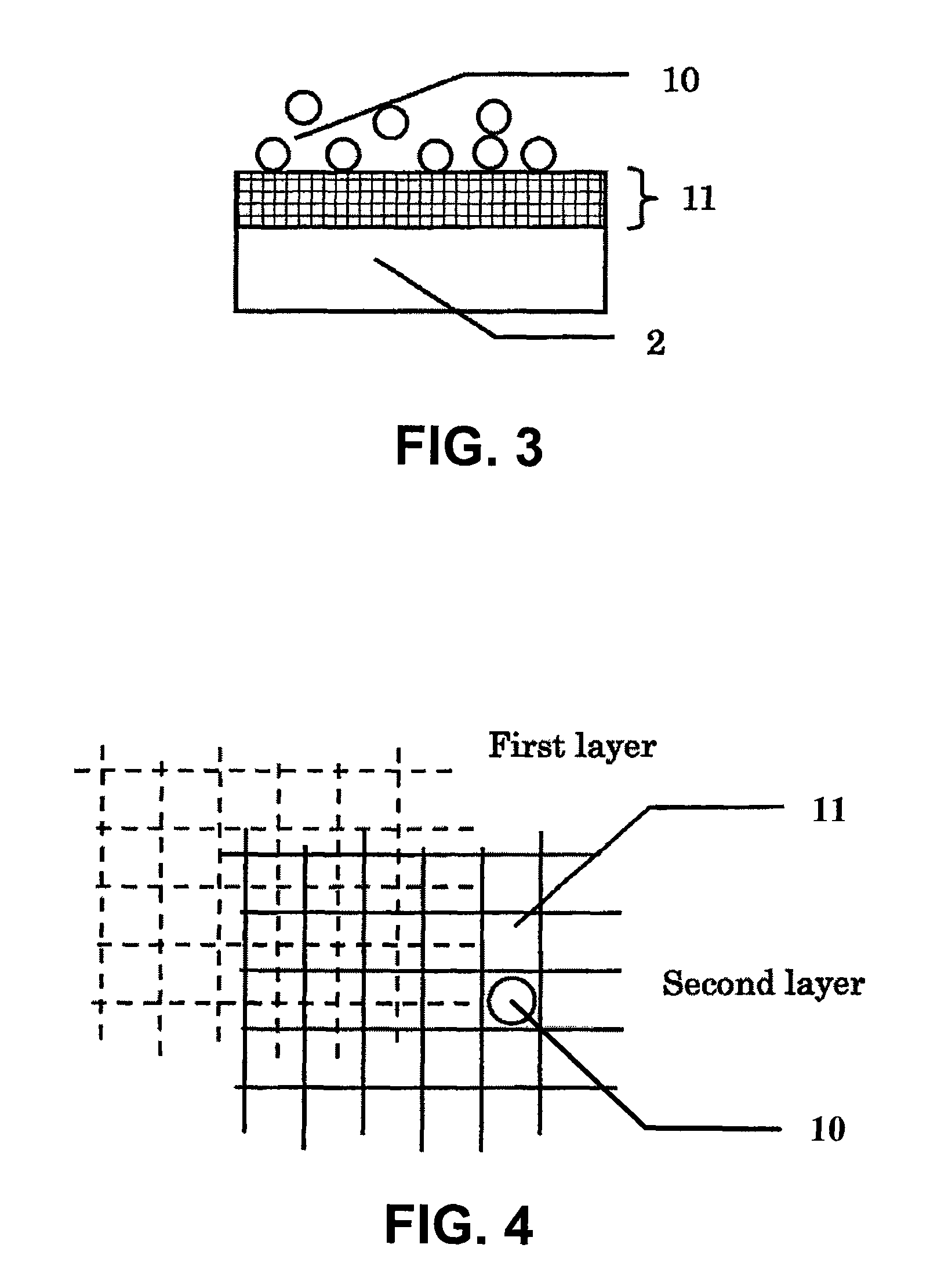Semiconductor device package
a technology of semiconductor devices and devices, applied in semiconductor devices, semiconductor/solid-state device details, electrical apparatus, etc., can solve the problems of short-time failure of semiconductor chips, decrease in electrical insulation, and adverse effects of semiconductor devices, so as to improve the adhesion and improve the adhesion. , the effect of improving the adhesion
- Summary
- Abstract
- Description
- Claims
- Application Information
AI Technical Summary
Benefits of technology
Problems solved by technology
Method used
Image
Examples
first embodiment
[0023]FIG. 1 shows the present invention. In a semiconductor device package 4, a semiconductor chip 1 is disposed on a die pad 9 which is located in a center of a lead frame 2 made of a copper material, and is bonded to the die pad 9 through an adhesive resin layer. The semiconductor chip 1 is electrically connected to the lead frame 2 through a bonding wire 3. The resin package body 4 which covers the semiconductor chip 1 and the lead frame 2 and is made of an epoxy resin is formed, and the semiconductor chip 1 and the lead frame 2 are sealed in the resin package body 4 thus formed. A part of the lead frame 2 is extended outside the resin package body 4 to serve as an external lead 5, which is used in connection with an external circuit. The point is that the lead frame 2 used in this case has a mesh structure. The mesh structure may exist only on a surface portion of the lead frame 2 and may exist only on the internal part of the lead frame 2.
[0024]As a resin material forming the ...
second embodiment
[0027]FIG. 3 shows the present invention. The mesh structure of the present invention has a mesh size smaller than an average diameter of filler particles 10 contained in a mold resin. When the mesh size is smaller than the average diameter of the fillers 10 contained in the mold resin to be used, a filler particle having a diameter larger than the average diameter cannot penetrate the mesh structure. Accordingly, an amount and diameter of the fillers contained in the mold resin can be changed in the vicinity of the surface of the lead frame 2, and thus an elastic modulus of the mold resin around the lead frame of the mesh structure 11 can be decreased. Consequently, the mold resin follows the deformation of the lead frame due to an external force, whereby separation is less likely to occur in the connecting surface between the mold resin and the lead frame.
third embodiment
[0028]FIG. 4 shows the present invention, which has a structure in which two or more layers of the mesh structure of the lead frame are piled. With this structure, even when the mesh of each layer has a size larger than the average diameter of the filler particles 10, the resultant mesh size completed by piling the mesh structures becomes smaller, and thus a size of the mesh can be designed with respect to an arbitrary particle diameter. Moreover, when the mesh structure is piled to form a multilayer including more than two layers, the resin penetrates into the lead frame and is structurally bonded thereto more firmly. Accordingly, separation is less likely to occur in the connecting surface between the mold resin and the lead frame.
PUM
 Login to View More
Login to View More Abstract
Description
Claims
Application Information
 Login to View More
Login to View More - R&D
- Intellectual Property
- Life Sciences
- Materials
- Tech Scout
- Unparalleled Data Quality
- Higher Quality Content
- 60% Fewer Hallucinations
Browse by: Latest US Patents, China's latest patents, Technical Efficacy Thesaurus, Application Domain, Technology Topic, Popular Technical Reports.
© 2025 PatSnap. All rights reserved.Legal|Privacy policy|Modern Slavery Act Transparency Statement|Sitemap|About US| Contact US: help@patsnap.com



